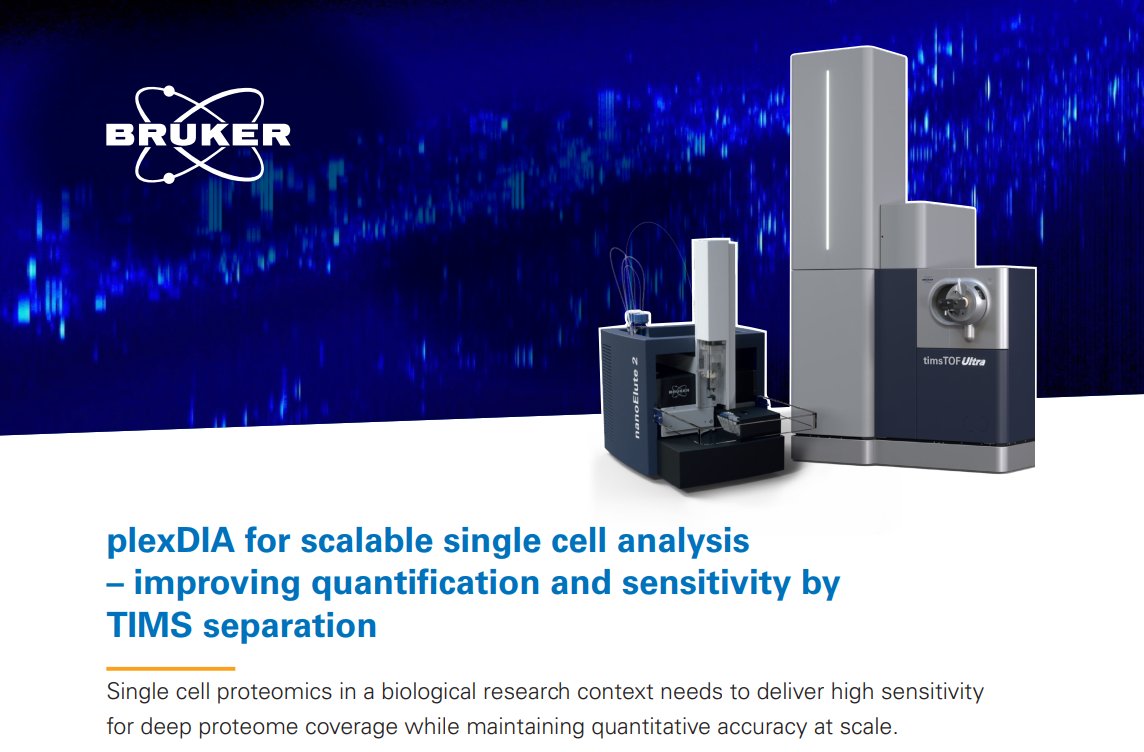Protocols for single-cell proteomics
This section organizes protocols for preparing LC-MS/MS systems for single-cell proteomic analysis, preparing single-cell samples, optimizing and performing the analysis.
Preparing LC-MS/MS systems for single-cell proteomics
The liquid chromatography system and the mass spectrometer need to be optimized for analyzing tiny protein samples to a state described here as single-cell ready. This preparation can be accomplished using bulk samples diluted to single-cell levels. The preparation has been described in multiple protocols, including by Petelski et al., Nature Protocols.
- Petelski A, Emmott E, Leduc A, Huffman RG, Specht H, Perlman D, Slavov N. Multiplexed single-cell proteomics using SCoPE2, Nature Protocols, 2021
Optimizing and benchmarking LC-MS/MS analysis
Our protocols for optimizing peptide separation and tandem mass spectrometry analysis include data driven pipelines named DO-MS. These protocols and the associated software tools are available at: do-ms.slavovlab.net. DO-MS allows to optimization of duty cycle methods, peptide separation, number of survey scans per duty cycle, and quality control of single-cell data acquisition for DDA and DIA methods.
-
Wallmann G., Leduc A., Slavov N. Data-Driven Optimization of DIA Mass-Spectrometry by DO-MS, J. Proteome Res. doi: 10.1021/acs.jproteome.3c00177 (2023), preprint, PDF
-
Huffman RG, Specht H, Chen AT, Slavov N. DO-MS: Data-Driven Optimization of Mass Spectrometry Methods J. of Proteome Res. doi: 10.1021/acs.jproteome.9b00039 (2019), preprint, PDF
Achieving single-cell readiness is also discussed in workshops of the Single Cell Proteomics Conference.
Preparing single-cell samples
Preparing single cells for mass spectrometry protein analysis aims to maximize protein delivery to the detectors while at the same time minimizing contaminations. These objectives are challenging, especially when we would like to prepare and analyze tens of thousands of single cells.
Protocols for multi-well sample preparation
The mPOP protocol supports the preparation of a few hundred single cells in multi-well plates. It is described in the articled below:
- Petelski A, Emmott E, Leduc A, Huffman RG, Specht H, Perlman D, Slavov N. Multiplexed single-cell proteomics using SCoPE2, Nature Protocols, 2021
- Petelski A, Slavov N., Specht H, Single-Cell Proteomics Preparation for Mass Spectrometry Analysis Using Freeze-Heat Lysis and an Isobaric Carrier, Jove, 2022
Protocols for highly parallel glass slide sample preparation
A high-throughput sample preparation has been described by Leduc et al., Geneome Biology. The nPOP protocol enables flexible experimental designs supporting different multiplexing schemes without requiring specialized consumables; nPOP supports all existing multiplexing approaches and can be easily programmed to new ones that may emerge. It can prepare over 3,000 single cells in parallel using 8-20nl reaction volumes per cell.
- Leduc A, Khoury L., Cantlon J., Khan S., Slavov N. Massively parallel sample preparation for multiplexed single-cell proteomics using nPOP, bioRxiv, doi: 10.1101/2023.11.27.568927, Nature Protocols, doi: 10.1038/s41596-024-01033-8
- Leduc A, Koury L., Cantlon J., Slavov N. Highly Parallel Droplet Sample Preparation for Single Cell Proteomics, protocols.io, doi: dx.doi.org/10.17504/protocols.io.4r3l24r7qg1y/v3
- Blog post: Flexibility meets quality and scale
Resources
- Bruker application note, June 2024: plexDIA for scalable single-cell analysis – improving quantification and sensitivity by TIMS separation
- Cellenion offers assistance for nPOP via a partnership nPOP program
